When it comes to nurturing your furry friend, choosing the right dog food can feel overwhelming. You want the best for your loyal companion—something that supports their energy, health, and longevity. That’s why understanding the value of high protein dog food is paramount. Protein isn’t just a fancy term on the back of a bag; it’s a nutritional powerhouse essential for your dog’s overall well-being. In this article, I will take you through the ins and outs of high protein dog food, breaking down why it matters, how to pick the right options, and highlighting some top products that stand out in the market.
Whether you’re a pet owner seeking local services, care tips, or product advice, I guarantee by the end, you’ll have a solid grasp of how high protein dog food can transform your pet’s life. From muscle building to digestive health and even helping senior dogs thrive, we’ll cover a wide range of benefits and practical steps. Ready to give your dog the nutrition they deserve? Let’s dive in.
Understanding High Protein Dog Food: What Makes It Different?
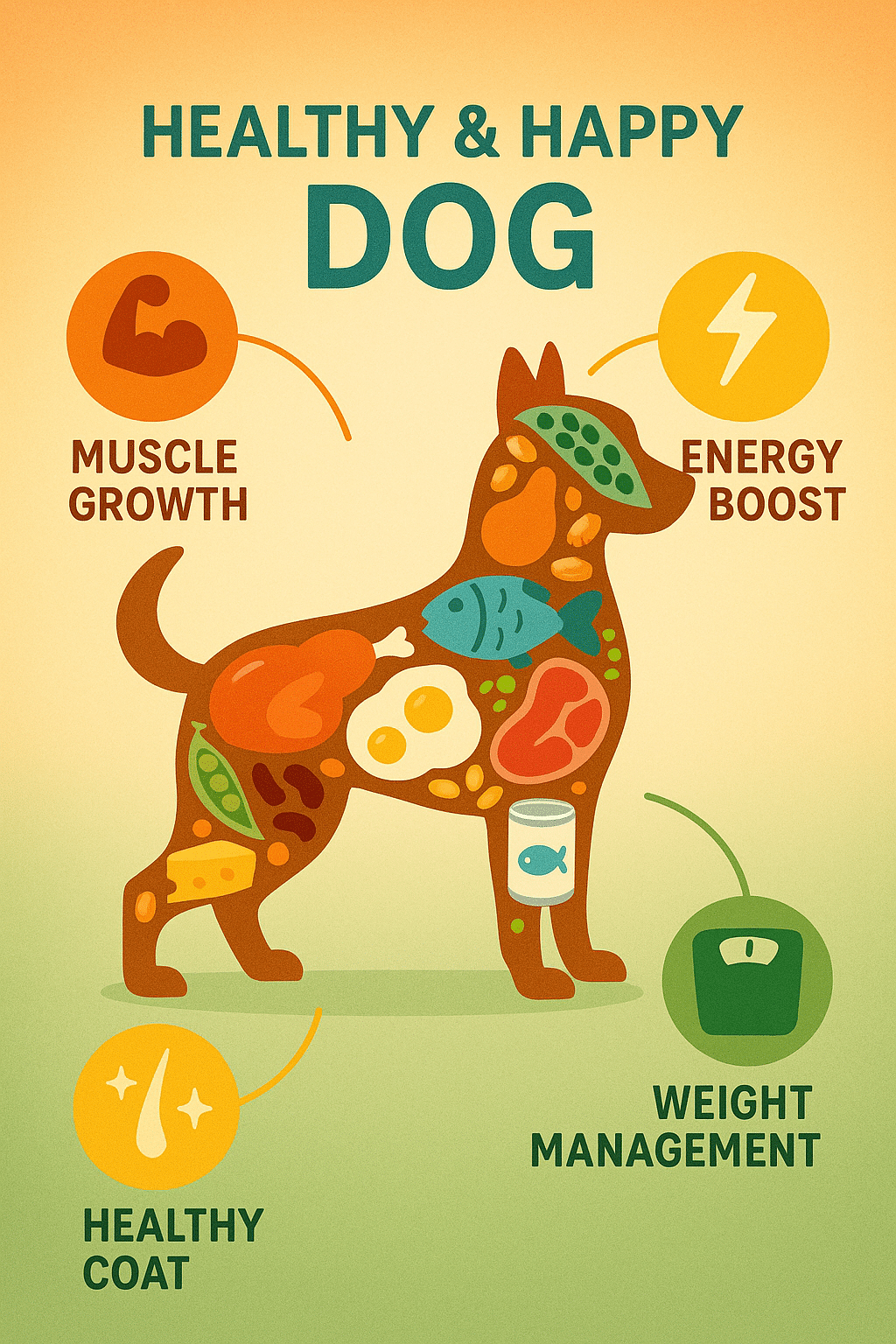
When you first hear “high protein dog food,” you might wonder, what exactly sets it apart from regular dog food? The answer lies in the quality and quantity of protein content, which directly influences your dog’s health.
Protein Content and Quality: Animal vs. Plant Sources
Protein in dog food primarily comes from two sources: animal and plant. Animal-based proteins like chicken, beef, fish, and lamb provide complete essential amino acids, which are the building blocks dogs need for strong muscles, tissue repair, and immune support.
On the other hand, plant-based proteins—such as peas, lentils, chickpeas—can be part of a balanced diet but often lack a full set of amino acids required by dogs. That’s why many high protein options emphasize animal proteins or combine them strategically with plant ingredients to ensure nutrition is complete.
For example, the ACANA Singles Limited Ingredient Diet High Protein Dog Food offers recipes with 65% animal content from single protein sources like beef or lamb. This design ensures a concentrated protein source without unnecessary fillers.
AAFCO Labeling Standards and What They Mean for Protein Claims
To navigate dog food labels effectively, you should understand the Association of American Feed Control Officials (AAFCO) standards. AAFCO establishes nutrient profiles that dog foods must meet to be considered complete and balanced. Look for products that state they meet AAFCO standards for the specific life stage of your dog, such as “adult maintenance” or “growth.”
Moreover, AAFCO requires dog food ingredients to provide at least a minimum amount of crude protein (by percentage). High protein dog foods typically exceed that minimum significantly, offering 30% or more protein content, which benefits active or muscle-building dogs.
Why Protein Is Crucial for Your Dog’s Health and Well-being
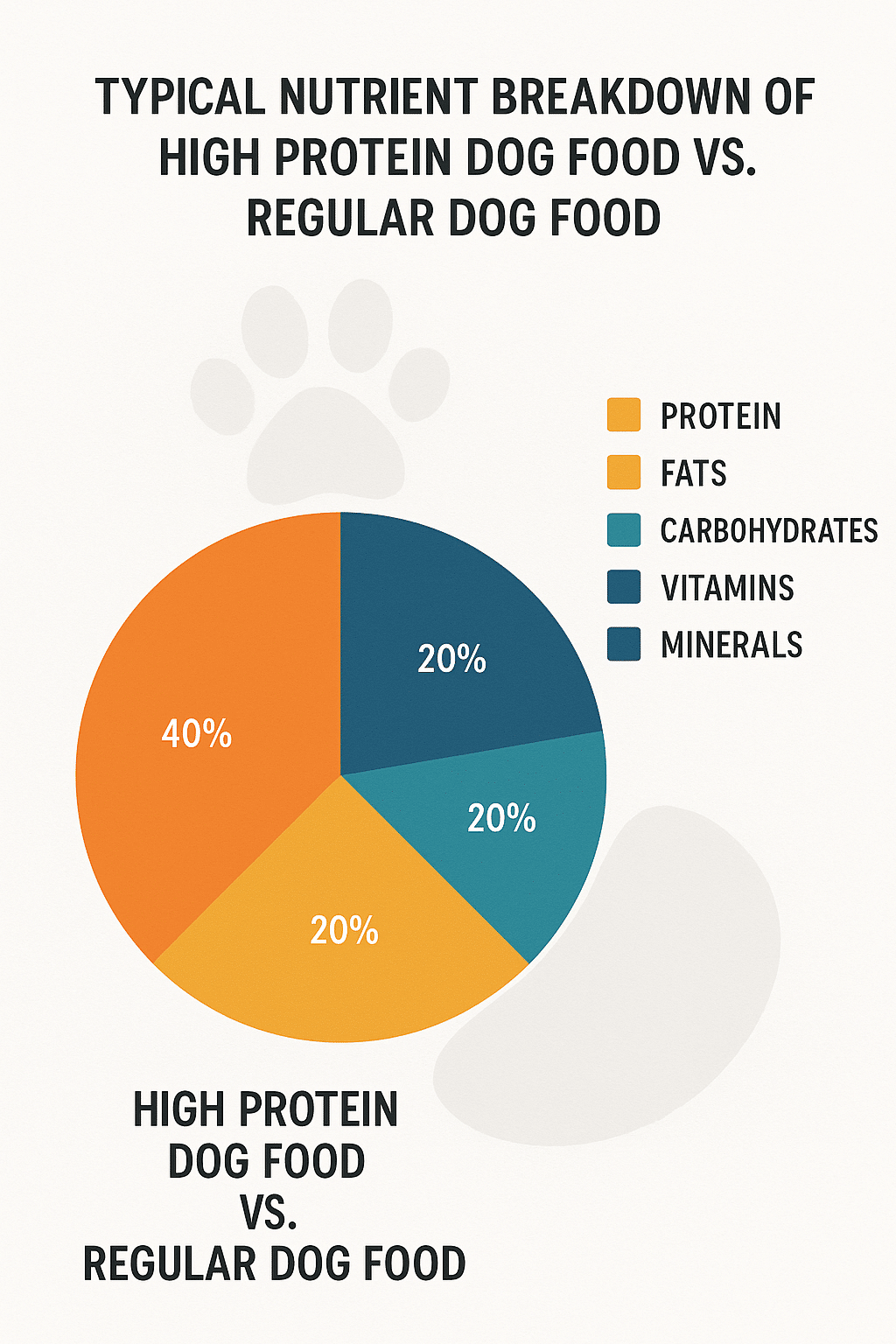
Having understood what high protein dog food is, let’s talk about why protein is such an invaluable nutrient throughout your dog’s life.
Role of Protein in Muscle Maintenance and Growth
Protein plays a starring role in repairing, maintaining, and building muscle tissue. Active dogs, working breeds, and puppies especially need ample protein to support muscle development and recovery after exercise or play. Even senior dogs benefit from sufficient protein to help slow muscle loss that naturally comes with aging.
For instance, formulas like Purina Pro Plan High Protein Shredded Blend include real chicken and shredded meat pieces to boost protein intake while supporting muscle health.
Protein and Energy Needs for Different Life Stages and Activity Levels
Protein provides not only building blocks but also a valuable energy source. Active dogs, such as working, sporting, or highly playful pets, burn calories rapidly and thus require diets higher in protein and fat for sustained energy.
Puppies require even more protein proportionally to fuel their rapid growth and development. Conversely, senior dogs may need protein-rich but calorie-controlled diets to maintain muscle mass without gaining excess weight.
In the case of large breed dogs, selecting high protein dog food tailored for their size (like many options offered by Purina Dog Chow High Protein Adult Formula) supports controlled, healthy growth while supporting strong muscle and bone structure.
Key Health Benefits of Feeding High Protein Dog Food
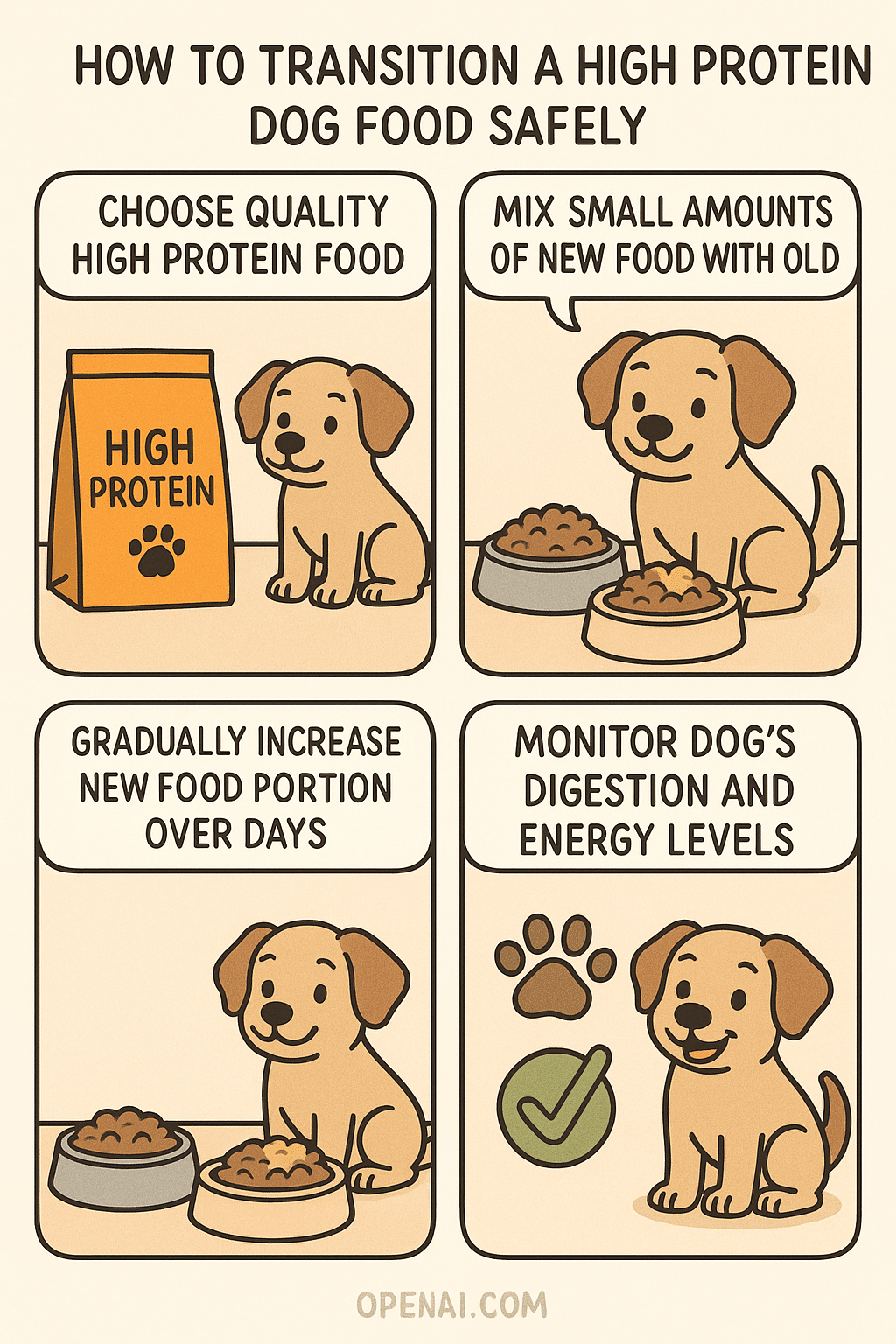
You’ve heard protein is critical, but the benefits are wide-ranging and deeper than just muscle building.
Supporting Digestive Health and Immune Function
High protein dog foods that include quality animal proteins and fiber-rich vegetables (like ACANA’s sweet potatoes and pumpkin) promote healthy digestion and gut flora balance. For example, Purina Pro Plan High Protein Shredded Blend contains guaranteed live probiotics to further boost immune defense and digestive function.
Promoting Healthy Skin and Coat
Omega fatty acids—often found alongside animal proteins—help maintain a glossy coat and healthy skin. Products like PEDIGREE High Protein Adult Dry Dog Food enrich their formulas with Omega-6 and zinc to nourish skin, reduce dryness, and promote a shiny, soft coat.
Benefits for Senior Dogs and Dogs with Allergies
Older dogs, often facing muscle loss and sensitivities, greatly benefit from high-quality protein sources with limited ingredients to avoid allergic reactions. ACANA’s Singles Limited Ingredient Diet offers single animal protein sources that reduce allergen exposure. Likewise, Stella & Chewy’s Freeze-Dried Raw High Protein Recipes provide raw, minimally processed meals that can be easier on sensitive stomachs.
Weight Management Benefits
High protein dog foods support lean body mass retention, which is vital for metabolizing calories efficiently. Coupled with appropriate portion control and exercise, these diets help dogs maintain a healthy weight. The Wellness CORE RawRev High Protein Dry Dog Food is grain-free and designed to deliver balanced nutrition perfect for weight-conscious pets.
How to Choose the Right High Protein Dog Food for Your Pet
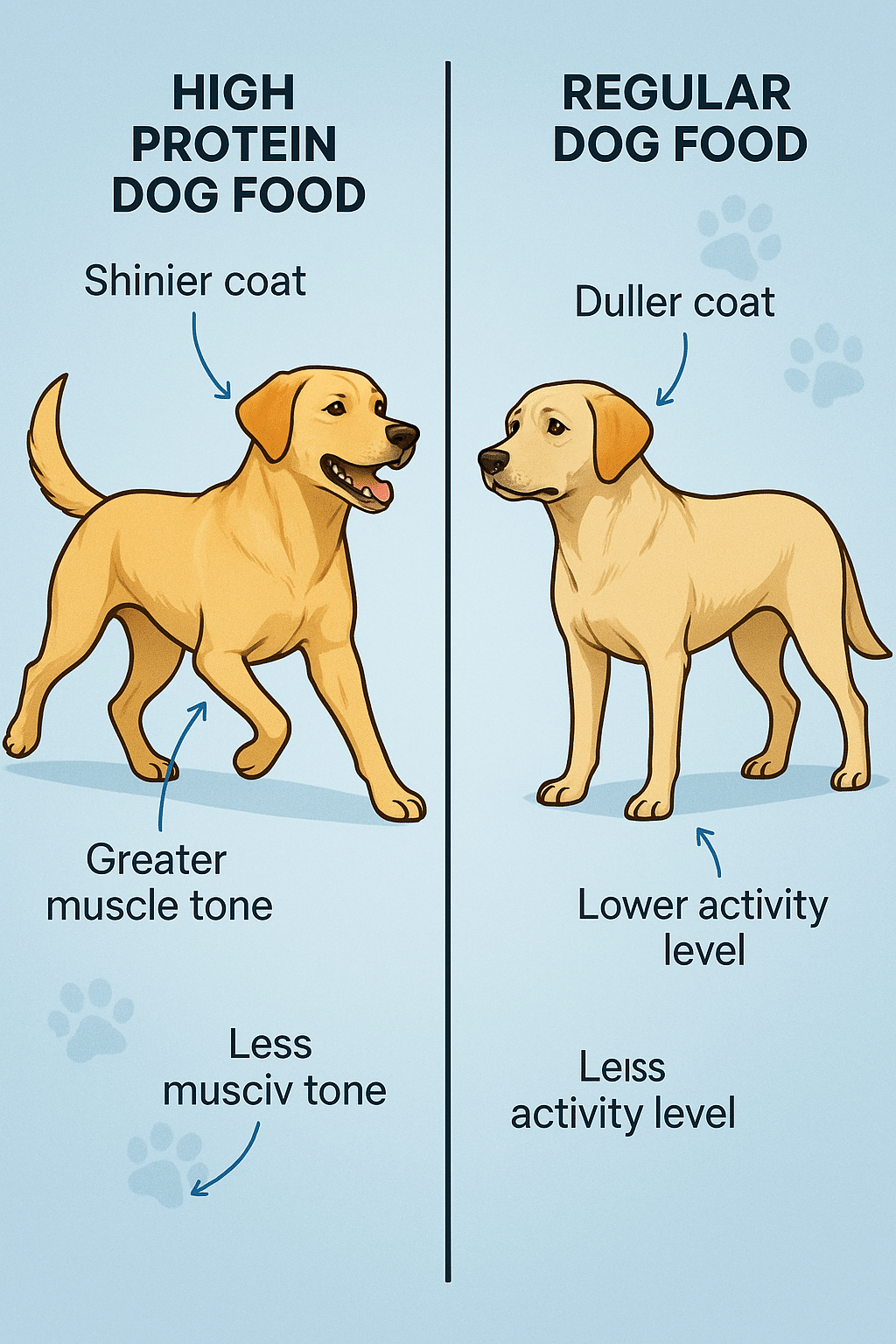
With all these options, how do you zero in on the perfect high protein dog food for your furry buddy?
Assessing Your Dog’s Specific Nutritional Requirements
First things first: identify your dog’s life stage (puppy, adult, senior), breed size, activity level, and health conditions. This informs protein needs and other nutrient considerations.
For example, growing puppies often require protein levels of 22-32%, while adult maintenance diets might range from 18-30%, depending on activity.
If you have an active dog, like a hiking companion or agility athlete, look for protein levels on the higher end and formulas rich in essential amino acids.
Limited Ingredient and Grain-Free Options for Sensitive Stomachs
Dogs with allergies or digestive troubles benefit from formulas with limited animal protein sources and no fillers. ACANA Singles and Solid Gold’s Grain-Free High Protein Recipes offer grain-free choices to minimize irritation.
Always check ingredient lists carefully to avoid allergens specific to your dog, such as wheat, soy, chicken, or corn.
Considering Locally Sourced and Responsible Ingredients
Recently, there’s been a bigger push toward sustainable and ethically sourced proteins in pet food. Choosing brands that support responsible farming helps the environment and often improves ingredient quality.
For instance, many premium brands like Wellness CORE emphasize natural, responsibly sourced ingredients. Supporting local suppliers or brands committed to reducing carbon footprints is a win-win.
Consulting Your Veterinarian for Personalized Recommendations
Nutrition needs are unique for every pup. Before switching to a high protein dog food, it’s wise to discuss options with your vet. They can consider your dog’s medical history, lab results, and specific health challenges to recommend the optimal protein amount and type.
Product Spotlight: Top High Protein Dog Food Options
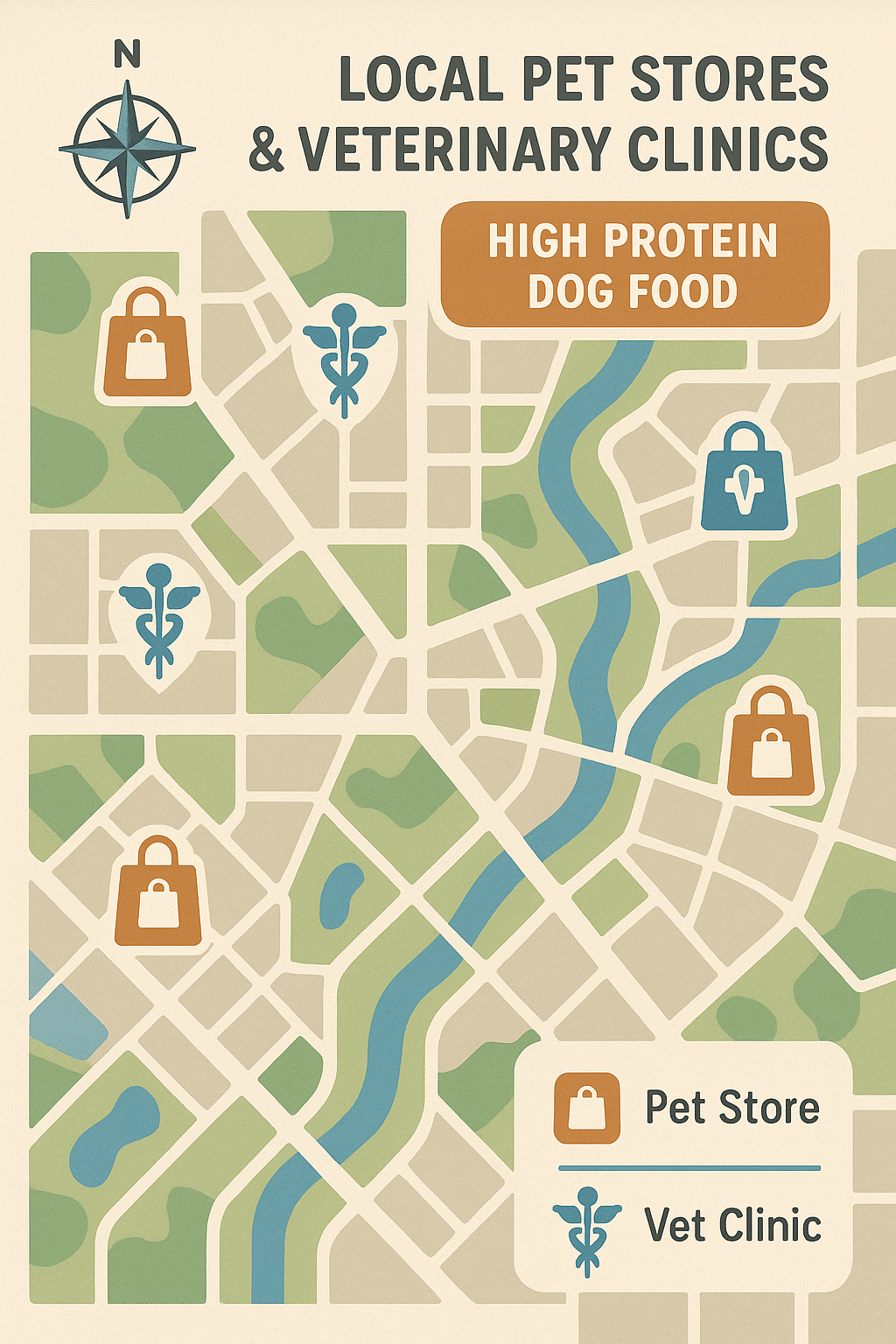
To help you shop with confidence, here are seven top-rated, high protein dog foods you can easily find online or nearby.
ACANA Singles Limited Ingredient Diet High Protein Dog Food
- Single Protein Source: Beef, duck, pork, or lamb, delivering 65% animal ingredients.
- Digestive Support: Includes fiber-rich veggies like sweet potatoes and pumpkin.
- Natural Formula: No artificial flavors or preservatives.
- Where to Buy: ACANA Official Site, Amazon, Petco, and local pet stores.
Purina Pro Plan High Protein Shredded Blend
- Texture: Combination of crunchy kibble and shredded meat.
- High-Quality Protein: Real chicken as first ingredient.
- Added Benefits: Probiotics for immune and digestive health.
- Where to Buy: Amazon, Petco, Benson’s Pet Center, Purina.
Purina Dog Chow High Protein Adult Formula
- Protein Content: 30g per cup.
- Balanced Nutrition: 23 essential vitamins and minerals.
- Flavors: Real lamb and beef options.
- Where to Buy: Purina Site, Walmart, PetSmart, Dollar General.
Stella & Chewy’s Freeze-Dried Raw High Protein Recipes
- Raw and Freeze-Dried: Maintaining nutrients and protein integrity.
- Flavor Varieties: Chicken, beef, and more.
- Convenient: Available in patties and meal mixers.
- Where to Buy: Stella & Chewy’s, Petco, PetSmart, Walmart, Amazon.
PEDIGREE High Protein Adult Dry Dog Food
- Protein Boost: 25% more protein than regular Pedigree.
- Real Meat: Beef and lamb flavors.
- Skin and Coat Health: Omega-6 fatty acids and zinc included.
- Where to Buy: PetSmart, Petco, Target, Pets Warehouse.
Wellness CORE RawRev High Protein Dry Dog Food
- Grain-Free: Contains freeze-dried raw turkey pieces.
- Power-Packed: Omega fatty acids, antioxidants, probiotics.
- Supports: Lean muscle, healthy coat, weight management.
- Where to Buy: Wellness Site, Amazon, Petco, PetSmart.
Solid Gold High Protein Grain Free Dog Food
- Wild-Caught Fish Variety: Salmon, whitefish, trout.
- Grain-Free: Suitable for sensitive dogs.
- Rich in Nutrients: Supports skin, coat, and overall vitality.
- Where to Buy: Solid Gold, Petco, PetSmart.
Feeding Tips for Transitioning and Maximizing Benefits of High Protein Dog Food
Switching to a high protein diet requires care to ensure your dog adapts comfortably.
Gradual Transitioning to Prevent Digestive Upset
Introduce new food slowly over 7–10 days by mixing increasing amounts with your dog’s current food, allowing their digestive system to adjust. Sudden changes can cause diarrhea or gas.
Adjusting Portions Based on Activity and Life Stage
Active dogs will need more food than sedentary ones. Monitor your dog’s weight and energy, adjusting feeding amounts accordingly. Be mindful with senior dogs who may need fewer calories but more protein.
Offering Fresh Water and Monitoring Response
Protein metabolism increases water needs, so always provide fresh water to prevent dehydration. Keep an eye on stool quality, behavior, and energy levels to gauge how your dog is responding.
Additional Care Tips for Dogs on High Protein Diets
Managing Allergies and Sensitivities
If your dog has allergies, choose limited ingredient or novel protein diets. Consult your vet for allergy testing and dietary advice to tailor the protein source best suited for your dog.
Incorporating Regular Exercise to Complement Diet
Protein feeds muscle but exercise builds it. Maintain a balanced routine of walks, play, or training to maximize your dog’s muscular health.
Routine Vet Checkups to Monitor Health and Nutritional Status
Regular checkups help track weight, muscle condition, and overall health to tailor dietary needs over time.
Unique Perspective: The Emerging Importance of Sustainable and Responsible Protein Sources
How Environmental Impact Influences High Protein Dog Food Choices
As pet owners, our choices extend beyond our pets’ health to environmental responsibility. The production of animal proteins can have significant carbon footprints. Premium brands increasingly prioritize sustainable sourcing to reduce this impact.
Benefits of Supporting Local Suppliers and Ethical Farming Practices
By opting for brands that source locally or ethically farmed ingredients, you help promote sustainable agriculture, reduce transportation emissions, and support transparent supply chains, all while ensuring your pet gets top-quality nutrition.
FAQs on High Protein Dog Food
Q1: What is the ideal protein content for adult dogs in high protein dog food?
High protein dog foods typically contain between 25% and 35% crude protein, but the ideal amount depends on your dog’s age, activity, and health status. Adult, active dogs generally benefit from 25% or more.
Q2: Can high protein dog food help with my senior dog’s muscle loss?
Yes, protein supports muscle maintenance and can slow sarcopenia (muscle loss) in senior dogs when combined with appropriate exercise and veterinary guidance.
Q3: Are grain-free high protein dog foods better for dogs with allergies?
Grain-free dog foods may help dogs sensitive to certain grains, but allergies usually stem from proteins. Limited ingredient diets with novel proteins might be more effective.
Q4: How should I transition my dog to a high protein dog food?
Gradually mix increasing amounts of the new food with the old food over 7 to 10 days to reduce digestive upset.
Q5: Where can I find locally sourced high protein dog food near me?
Check specialty pet stores or local suppliers focusing on sustainable and ethical ingredient sourcing. Brands like Wellness CORE and ACANA often emphasize responsible sourcing and offer retail partners.
Quick Takeaways / Key Points
- High protein dog food provides essential amino acids critical for muscle repair, growth, and overall vitality.
- Animal-based proteins deliver complete nutrition compared to plant-only sources, ensuring balanced diets.
- High protein diets support muscle maintenance in all life stages including puppies, active adults, and senior dogs.
- Benefits include improved digestive health, immune function, skin and coat quality, and weight management.
- Choosing limited ingredient or grain-free options helps pets with allergies and sensitive stomachs.
- Transition gradually to avoid digestive upset and monitor hydration and stool quality closely.
- Sustainability and ethical sourcing are growing factors in selecting premium high protein dog foods.
Conclusion
Feeding your beloved pet a high protein dog food isn’t just a trend—it’s a scientifically backed way to enhance their health, longevity, and happiness. By prioritizing protein quality and quantity aligned with your dog’s unique needs, you support their muscle strength, immune system, and skin health, setting them up for a vibrant life.
Remember, not all dogs have the same nutritional needs. So, take time to evaluate your furry friend’s age, activity level, sensitivities, and consult your veterinarian for tailored advice. With options like ACANA Singles and Stella & Chewy’s Freeze-Dried Raw, you have access to high quality, responsibly sourced foods that cater to various preferences.
Ready to boost your dog’s diet with high-quality protein? Start by exploring these trusted brands, making a confident transition, and watching your dog thrive like never before. They deserve nothing less than the very best—just like family.



